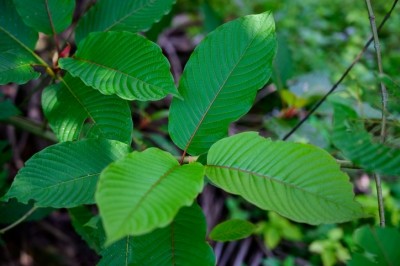AKA says it can see signs that government position on kratom is evolving

The American Kratom Association recently sent out a communication in which it claimed that the National Institute of Drug Abuse had changed its tune on the safety of the botanical. According to AKA, a NIDA webpage on the botanical had recently changed its wording to read that, “Kratom by itself is not associated with fatal overdose.”
According to Dave Herman, chairman of AKA, the organization has screen shots of the webpage at various times. According to the organization, the webpage was fairly quickly thereafter altered again. It now reads: “Information on kratom overdoses is currently being updated.”
“What is significant is that for the first time the National Institute of Drug Abuse acknowledged that kratom by itself doesn’t kill people,” Herman told NutraIngredients-USA.
Adverse events include many confounding factors
Herman said the issue here is that many adverse events attributed to kratom, including the widely publicized figure of 44 deaths, include many confounding factors. These include potential adulterants, such as undeclared pharmaceutical ingredients, in products labeled as kratom. Some of these deaths could only loosely be associated with ingestion of the botanical, Herman maintained.
“A lot of this comes from an event relating to a street drug sold in Sweden under the name ‘Krypton.’ It was a kratom powder laced with a deadly generic version of tramadol. Nine people died,” Herman said.
“To point to that as the predicate event is disingenuous. And some of those 44 deaths include someone who was shot in the chest and someone else who fell out of a window. In another of these events someone had been out partying, drinking and using heroin, and they died,” he said.
Herman said that kratom, unlike opioid drugs, does not have the potentially deadly mode of action that that family of drugs has. So to group the two together for safety assessment purposes is not scientifically valid.
“Our fight is about whether kratom is deadly. With overdoses of opiod drugs, there is an effect of respiratory suppression or depression. People just stop breathing. We have proof positive that kratom does not have this effect,” he said.
NIDA: No change in official position
For its part, NIDA maintains that it has not made a definitive change in its view of this botanical. When queried by NutraIngredients-USA about the webpage wording switch, NIDA released this statement:
“NIDA does not view kratom as a universally safe drug. NIDA is reviewing various studies as well as adverse effects reports related to kratom and will have updated information on our site soon, with links to the appropriate information so the public can review it. There was false information reported in the AKA press release; NIDA has never said Kratom is safe. For now, we are updating our fact sheet, which serves as our summary of the science, but there has been no significant change in our position.”
Checkered regulatory history
Kratom (Mitragyna speciosa) has a long history of use in Southeast Asia. It has had a checkered regulatory history in the United States.
Citing safety concerns, in 2014 FDA slapped an import ban on kratom products. At that time FDA also said that if companies wanted to bring it to market as a dietary ingredient, they should file a New Dietary Ingredient Notification, because there was no evidence that the botanical was on the market prior to the DSHEA grandfather date of Oct. 15, 1994.
Even so, the products have continued to find their way into the market. And an import does not in an of itself make a product ‘illegal.’ The NIDA kratom page (even after its purported update) has this to say about the current status of kratom: “Kratom is not currently an illegal substance and has been easy to order on the internet.”
In 2016, stakeholders in the herbal dietary supplement sphere successfully argued against federal the Drug Enforcement Administration’s attempt to put two active constituents of kratom on its schedule one list of controlled substances. The argument, which was supported by industry groups as well as lawmakers, was that the emergency procedure was not called for by the facts of the case and that it was a violation of the doctrine of due process.
Most recently, in March 2018 FDA sent out warning letters to Front Range Kratom of Aurora, CO; Kratom Spot of Irvine, CA and Revibe, Inc., of Kansas City, MO for selling kratom products that FDA alleged are in fact unapproved drug products making unproven claims about their ability to help in the treatment of opioid addiction and withdrawal. FDA alleges the companies have also made claims about treating pain, as well as other medical conditions such as lowering blood pressure, treating cancer and reducing neuron damage caused by strokes.
At that time FDA Scott Gottlieb said, “Far from treating addiction, we’ve determined that kratom is an opioid analogue that may actually contribute to the opioid epidemic and puts patients at risk of serious side effects.”
AKA: kratom should be available for supplement use
Herman said that AKA believes that kratom should be classified both as a food and a supplement. A supplement making no claims and marketed as a general wellness product ought to be possible, he said.
“We are not telling anyone to make any claims. We believe that the American people have the right to choose what to put into their bodies for their general health and well being as long as it doesn’t hurt them. We believe there are zero deaths associated with pure kratom,” he said.
More research could clarify safety issue
Herman said AKA views FDA’s suggestion that marketers should file NDI Notification as something of a red herring, given the agency’s current intransigent stance on the botanical’s safety. One of the issues continues to be that, despite the botanical’s long history of use, there is limited knowledge of its constituents.
More research could shed light on these, and help clarify the safety question. Recently, progress has been made on settling on an official AOAC quantification method. And other recent research has looked at further enumerating the metabolites of the plant’s two major alkaloid constituents—mitragynine (MG) and 7-hydroxymitragynine (7-OH-MG)—as well as the other minor constituents of the plant.
















